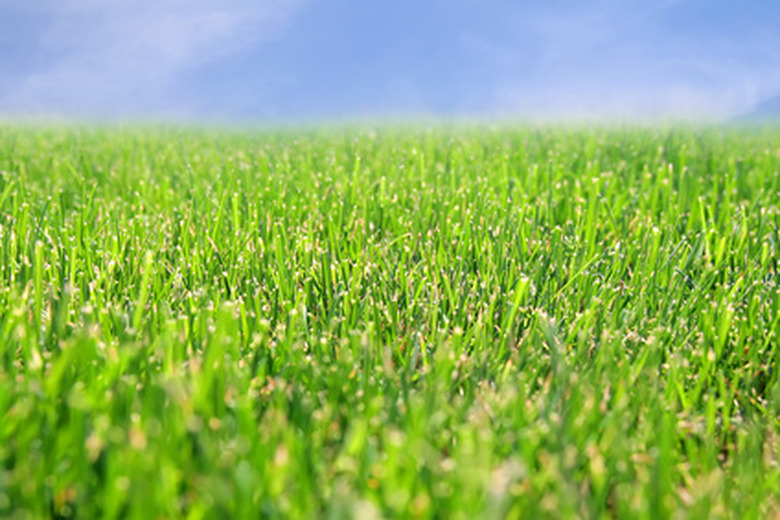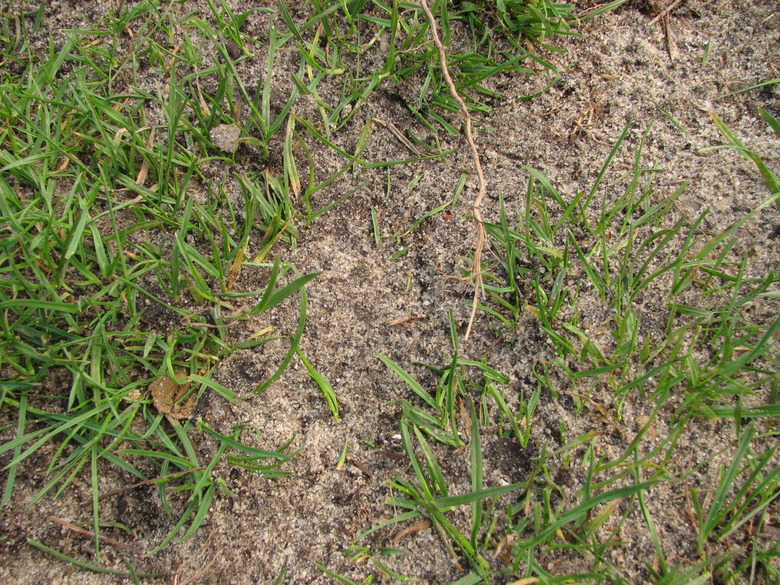The Best Fertilizers For Lawns With Sandy Soil
Sandy soils pose specific lawn care challenges to homeowners, and the type of fertilizer to use is one of them. Impacting more than just the health of the lawn itself, fertilizers in sandy soils can quickly leach nutrients, affecting groundwater.
The best lawn fertilizer to use when your soil is on the sandy side will depend somewhat on the grass type, but it will contain nutrients that might be leaching out, causing you to strike a balance to avoid overfertilization.
Importance of Fertilization for Healthy Lawns
A healthy lawn needs multiple nutrients to thrive and green up the way you want, but they are all required in different amounts, depending on the soil, the grass seed planted, and the use of the lawn. Any nutrient deficiency will be evident and result in an unattractive, sparse lawn—one that is susceptible to disease and pests.
Nutrients are either considered primary, secondary or micronutrients.
Primary Nutrients
The primary nutrients required are nitrogen, phosphorus and potassium (NPK), identified by a three-digit number (the NPK ratio) on all fertilizer products. For example, a high-nitrogen product could be identified as 10-5-5. Phosphorus is frequently called phosphate, while the amount of potassium generally refers to soluble potash.
Secondary Nutrients
The secondary nutrients required are calcium, magnesium and sulfur. These are needed in smaller amounts because they are often already present in the soil.
Micronutrients
Micronutrients are iron, manganese, zinc, copper, boron, molybdenum and chlorine. While these micronutrients are not part of most lawn fertilizers, they are more important for sandy soils, reports PennState Extension.
About Sandy Soil
A benefit of sandy soil is that it is well-draining—but this is also a drawback. A well-draining soil supports healthy root growth, providing the grass roots with space and oxygen in which to grow. This type of soil also resists compaction, which becomes especially important in any areas that see a lot of traffic or activity; you never need to do anything special to ensure aeration.
This ability to avoid compaction is a great boon for lawns. For example, sports fields and golf courses are grown on sand-heavy soils.
However, sandy soils are sieves for water and nutrients. Therefore, your lawn will need more irrigation and fertilization than a lawn grown on clayish soil.
If you are putting in a new lawn, consider adding amendments that will build organic matter and result in healthier soil to support the growth of new grass.
Growing Lawns on Sandy Soil
The primary thing to note for sandy soils is to fertilize frequently and in smaller amounts, because the fertilizer will leach out of the soil much more quickly than with heavier, more clayish soils. This is also true of irrigation.
Tip
While more irrigation and nutrients are required when the soil is sandy, light and frequent applications work best.
To ensure the presence of important nutrients, especially micronutrients, get a soil test and consult your local extension office to understand the results. The type of grass you have and the time of year will influence how to address deficiencies.
You may choose a water-soluble solution or granules of organic fertilizers or synthetic fertilizers. For liquid fertilizers, a hose attachment is appropriate, but if you use a granular fertilizer, a spreader is useful.
Tip
Because sandy soils leach nutrients more quickly than other types of soils, always use slow-release fertilizers, particularly slow-release nitrogen.
Fertilization Schedule
For lawns on sandy soils, Purdue University recommends a grass fertilizer schedule of six times annually during the growing season, although the September application is the most important.
Ideally, fertilize during the three fall months of September, October and November with a lawn fertilizer solution containing 0.75 pounds of nitrogen per 1,000 square feet.
Fertilize again with the same solution in late spring and summer, in May, June and July.
Warning
Never fertilize during winter when the ground is frozen.
Mowing Lawns With Sandy Soils
Mow lawns growing on sandy soils to a height of 3 to 3.5 inches, which is higher than for most lawns growing on silt or clayish soils.
Problems With Leaching
Excessive irrigation, wet weather or the application of quick-release nitrogen fertilizers can result in leaching, which carries nitrogen down through the soil to groundwater, causing contamination.
This is especially possible with sandy soils, which are more permeable, while runoff is usually more common with clayish, less permeable soils.

